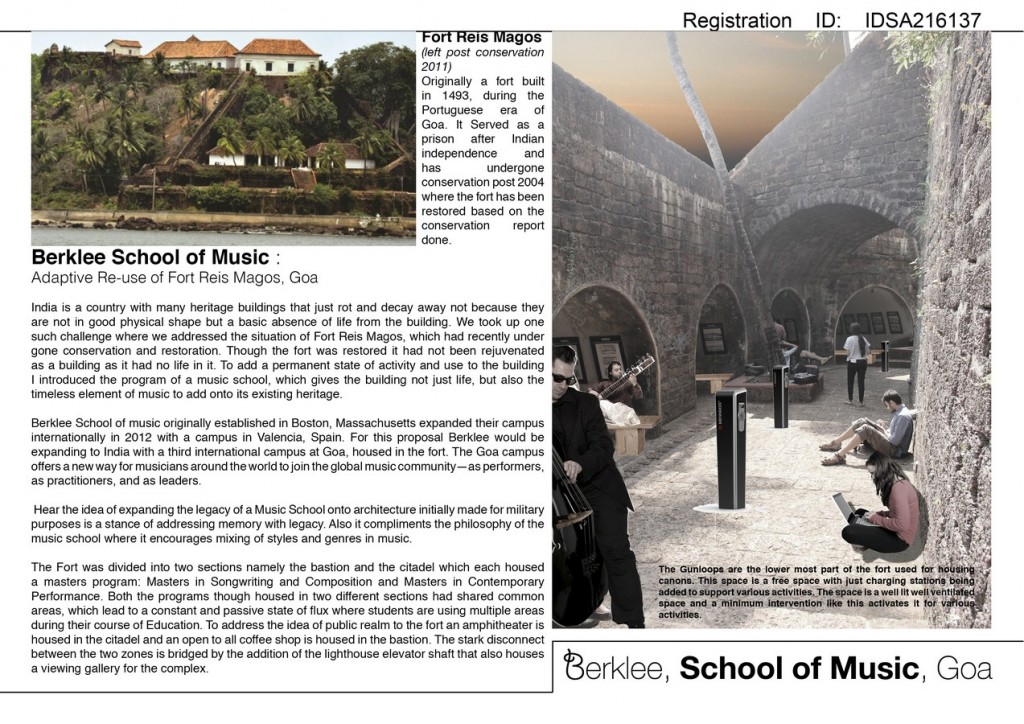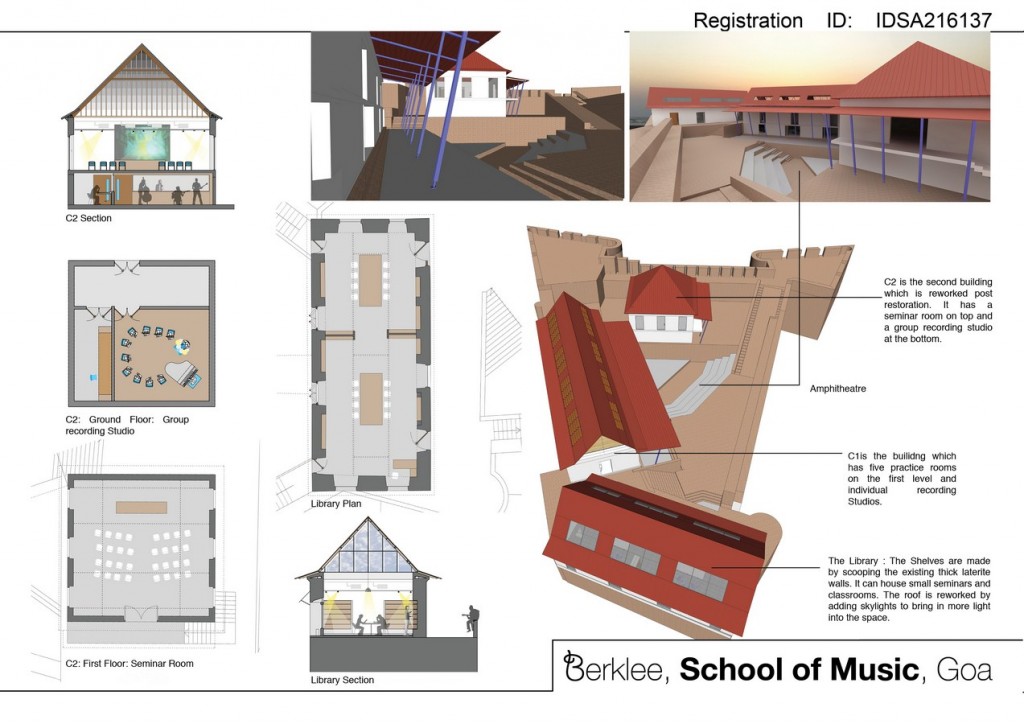Conservation is an act that allows an ageing building to survive in its physical essence preserving the memory imbibed within the building. But preserving buildings purely as sculptures does not do totally do justice to its heritage as the current cultural value of the building is limited to its former glory. Adaptive Re-Use is a strategy, which allows buildings to a part of the culture of the time and thus may be used as device to juxtapose the idea of an era based identities onto a building. Thus for this project the site of recently conserved Fort Reis Magos, situated on the banks of the Mandovi river in Goa is addressed as a site for reuse.
Participant Name: Advait Patel
University: CEPT University
Country: India

The key Design Concern of this project is to enhance the existing architecture of the historic context while making it a completely functional institution. The key concern of this project is to negotiate between the idea of heritage while complementing the heritage programmatically and architecturally with adequate additions to bring back life to the building complex.

India is a country with many heritage buildings that just rot and decay away not because they are not in good physical shape but a basic absence of life from the building. We took up one such challenge where we addressed the situation of Fort Reis Magos, which had recently under gone conservation and restoration. Though the fort was restored it had not been rejuvenated as a building as it had no life in it. To add a permanent state of activity and use to the building I introduced the program of a music school, which gives the building not just life, but also the timeless element of music to add onto its existing heritage.

Berklee School of music originally established in Boston, Massachusetts expanded their campus internationally in 2012 with a campus in Valencia, Spain. For this proposal Berklee would be expanding to India with a third international campus at Goa, housed in the fort. The Goa campus offers a new way for musicians around the world to join the global music community—as performers, as practitioners, and as leaders.
Hear the idea of expanding the legacy of a Music School onto architecture initially made for military purposes is a stance of addressing memory with legacy. Also it compliments the philosophy of the music school where it encourages mixing of styles and genres in music.

The Fort was divided into two sections namely the bastion and the citadel which each housed a masters program: Masters in Songwriting and Composition and Masters in Contemporary Performance. Both the programs though housed in two different sections had shared common areas, which lead to a constant and passive state of flux where students are using multiple areas during their course of Education. To address the idea of public realm to the fort an amphitheater is housed in the citadel and an open to all coffee shop is housed in the bastion. The stark disconnect between the two zones is bridged by the addition of the lighthouse elevator shaft that also houses a viewing gallery for the complex
Prev Post
Brooklyn Student Housing | Yiwei He
1 Min Read





